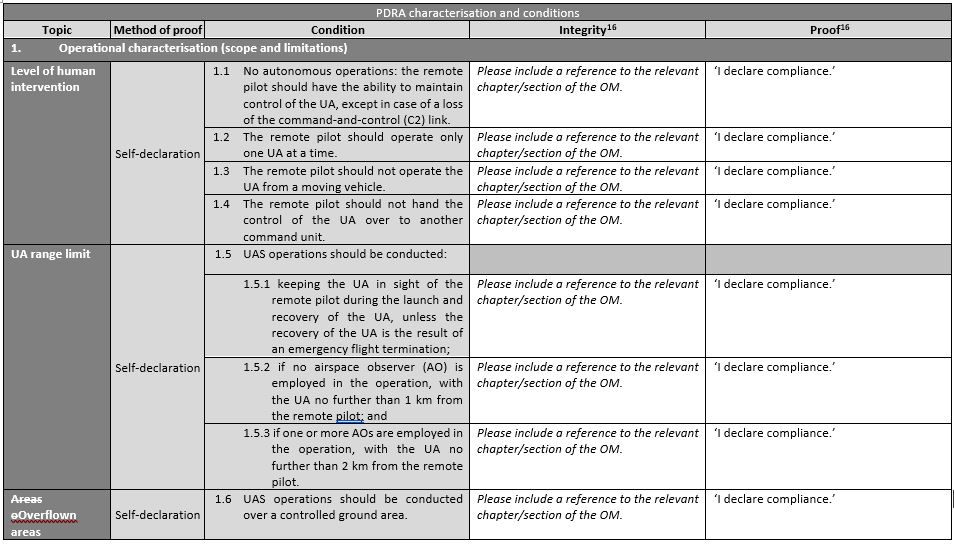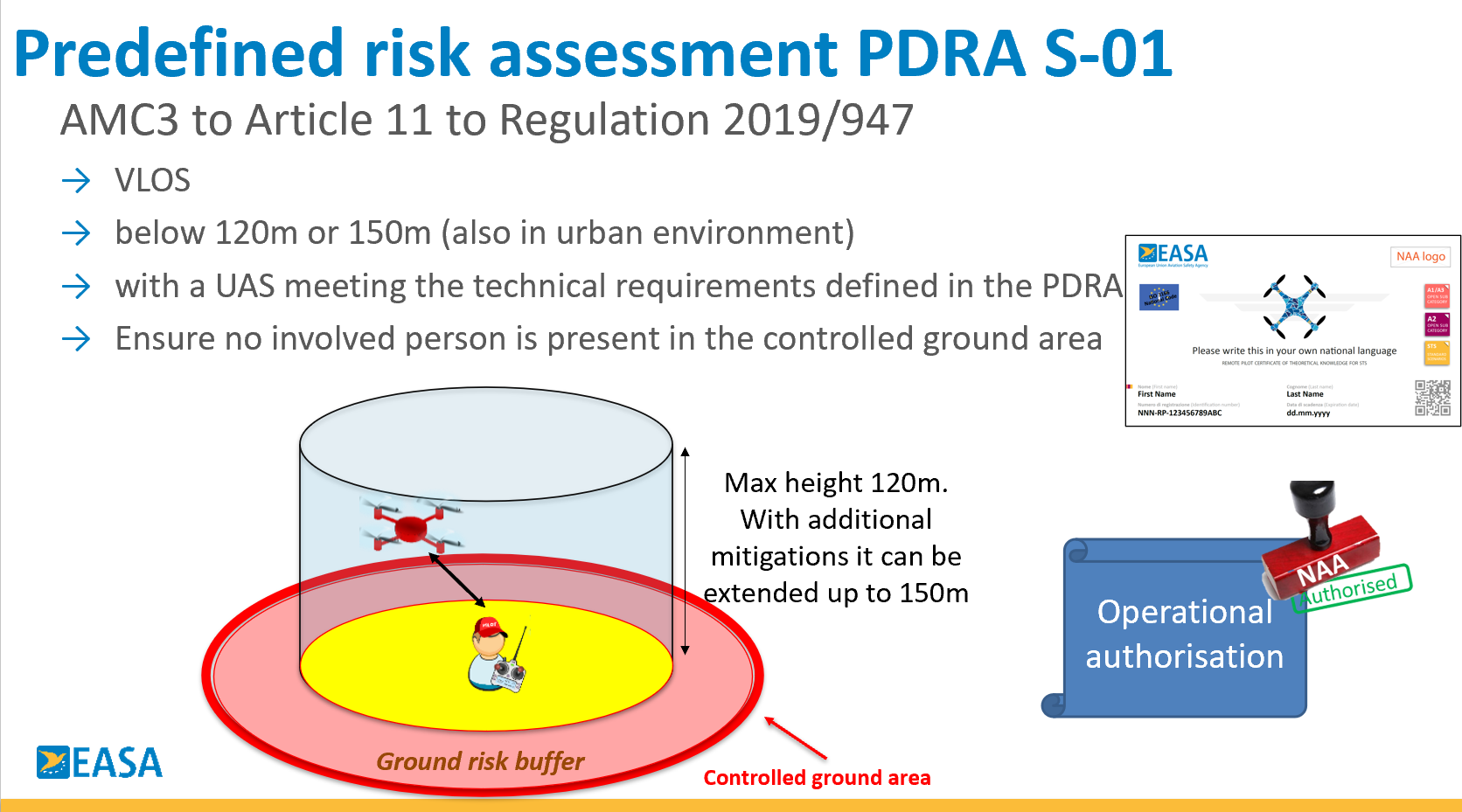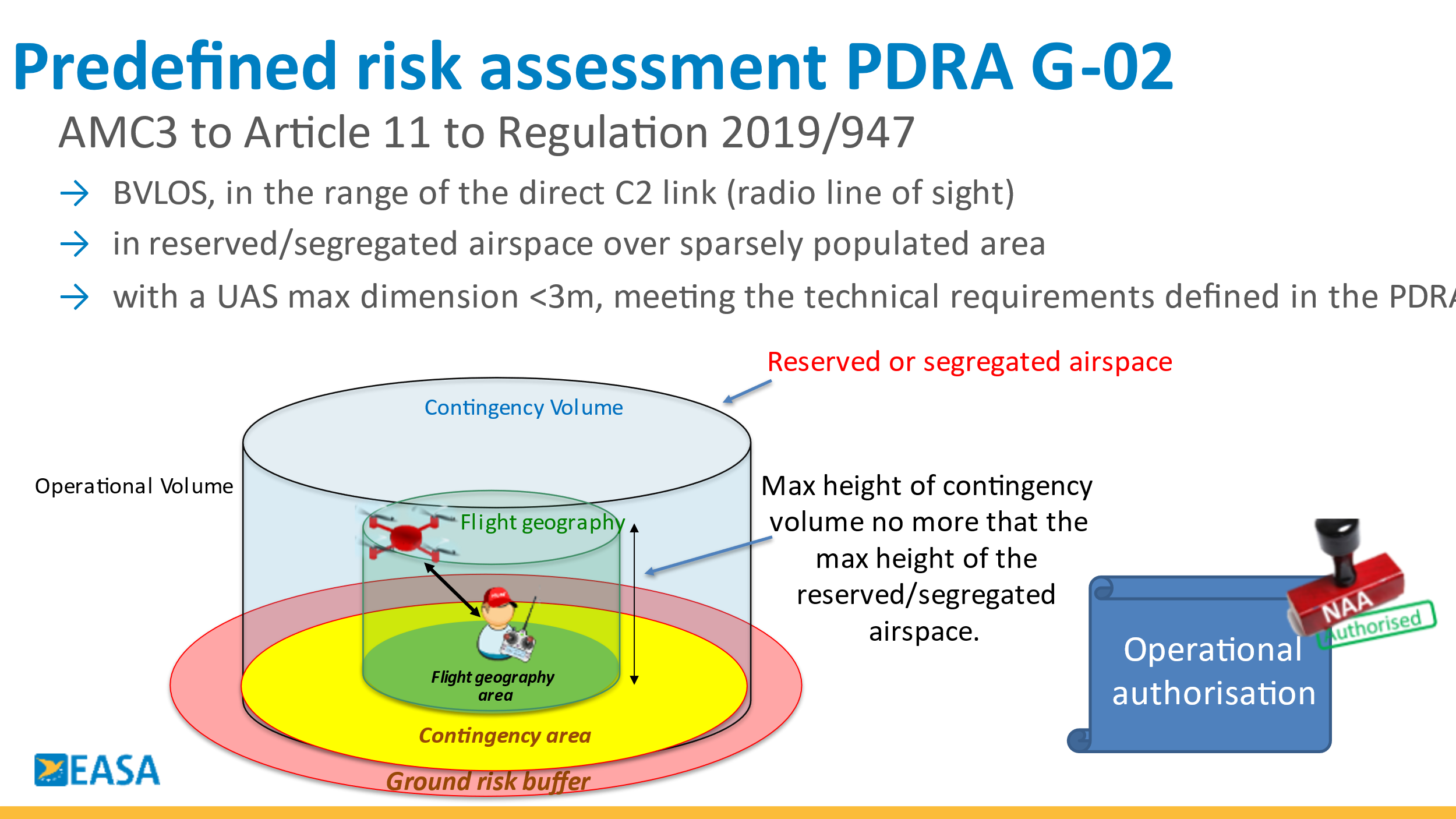In this site you can find:
- What is a PDRA
- Typical example of a PDRA
- Why a PDRA helps
- List of published PDRAs and associated Operations Manuals (where available)
- PDRA under consideration
- How can you propose a PDRA? Contact us!
- Stay informed
What is a PDRA
The Predefined Risk Assessment (PDRA) is an operational scenario for which EASA has already carried out the risk assessment and has been published as an acceptable means of compliance (AMC) to the Article 11 (risk assessment) of Regulation (EU) 2019/947.
The PDRA still requires an operational authorisation from the National Aviation Authority (NAA). However, the process will be much simplified. If the planned operation is covered by one of the published PDRAs, instead of carrying out the risk assessment, the UAS operator can just fill in the table of the PDRA, prepare the Operations Manual (OM) (please check the EASA Operations Manual for UAS operations conducted under PDRA-S01) and submit the application to the NAA of registration. The PDRA table is in reality a sort of checklist on how to develop the procedures that need to be contained in the OM (example for UAS operations conducted under PDRA-S01).
Typical example of a PDRA
This table shows a model example of what is a PDRA and what it could contain:

Why a PDRA helps
If the operation falls within the scope of one of the published PDRAs, it allows the applicant to quickly develop the operator manual and the evidences of compliance using the PDRA table to demonstrate that the operation is safe. Also, for the NAA the review of the documentation will be simplified.
Therefore the applicant can submit to the NAA of the state of registration a copy of the:
- application form;
- table of the desired PDRA, duly filled;
- Operator’s manual.
List of published PDRAs and associated Operations Manuals (where available)
- PDRA-S01 — Agricultural works, short range cargo ops
- Operations Manual for PDRA-S01 operations
- PDRA-S02 — Surveillance, agricultural works, short range cargo ops
- PDRA-G01 — Surveillance, long range cargo ops
- PDRA-G02 — All range of ops
- PDRA-G03 — Linear inspections, agricultural works





| PDRA Ref | UAS Characteristics | Main Ops characteristics | Typical ops |
| PDRA-S01 AMC4 Article 11 | Max dimension 3m |
|
Agricultural works, short range cargo ops |
|
PDRA-S02 AMC5 Article 11 |
MTOM=25 kg Max dim 3m |
|
Surveillance, agricultural works, short range cargo ops |
|
PDRA-G01 AMC2 Article 11 |
Max dim 3m |
|
Surveillance, long range cargo ops |
|
PDRA-G02 AMC3 Article 11 |
Max dim 3m |
|
All range of ops |
|
PDRA-G03 AMC6 Article 11 |
Max dim 3m |
|
Linear inspections, agricultural works |
PDRA under consideration
EASA is keen in reducing the burden for drone operators to obtain an operational authorisation and support the expansion of the incipient European drone industry. EASA intends to publish a number of PDRAs covering the most common drone operations. Some of these PDRAs are developed in conjunction with JARUS.
More than four are currently under evaluation and development (this is not an exhaustive list):
How can you propose a PDRA? Contact us
We are committed to publish as many as possible to increase generally the possibility for operators to use PDRAs.
We would like to hear your suggestions on new concept of operations for PDRAs. If you have any specific need for one or you want to provide suggestions on how to improve usability of the available one, email us at drones [at] easa.europa.eu (drones[at]easa[dot]europa[dot]eu)
We will consider them carefully, whether how we can accommodate this with a new PDRA, or perhaps how adjust an existing PDRA.
For additional information please contact the team.
 Stay informed on PDRA:
Stay informed on PDRA:
- Create an EASA account
- Follow the category "Civil drones (Unmanned aircraft)"
- Decide how you want to be notified